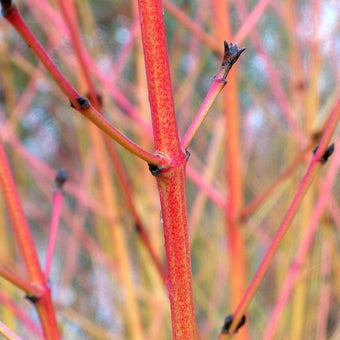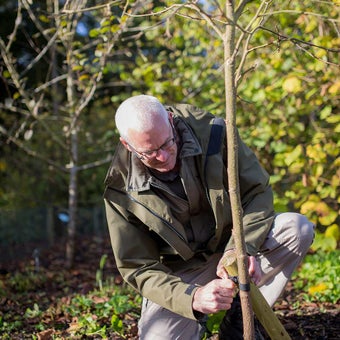
Quick facts
Autumn to spring is the best time to plant trees
Trees add structure, height and year-round interest to a garden
They’re great for wildlife too, offering nesting sites, flowers for pollinators and often nutritious fruit
Check the plant label before buying, to ensure your tree will thrive in your chosen planting site
Getting started
Choose your tree carefully, to suit your growing conditions and the available space. See our guides to growing trees, buying trees and trees for smaller gardens for more advice.
Trees are usually bought in pots, although some (especially fruit trees) may be available without pots ( or rootballed) between autumn and spring from specialist suppliers. All can be planted in the following way.
The best time to plant is from autumn to spring, as long as the ground isn’t too wet or frozen. Containerised trees can be planted at other times, but they may need more aftercare to help them settle in. Avoid planting in hot or dry weather.
What you’ll need to plant a tree:
- Bare-root or containerised tree
- Spade and fork
- Bucket of water
- Watering can or hose
- Tree guard or spiral (optional)
- (organic matter, such as chipped )
- Sturdy stake, mallet and tree tie
Top tip
Before buying a tree, always check its eventual height and spread, and how well it responds to pruning, to make sure it won’t outgrow its space.
How to plant a tree in eight simple steps
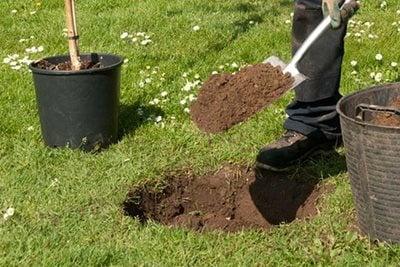
- Dig a hole Make sure it's the same depth as the tree’s but three times as wide. Loosen the soil around the sides of the hole with a fork if necessary.
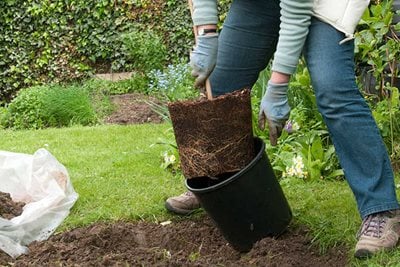
- Soak the rootball Soak thoroughly before planting – standing the tree in a bucket of water is an easy way to do this. Then remove the tree from its pot.
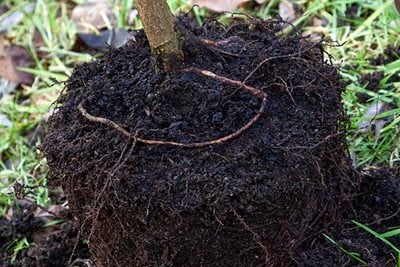
- Check the rootball Gently loosen the roots if they’re tightly packed, to encourage them to grow outwards into the soil.
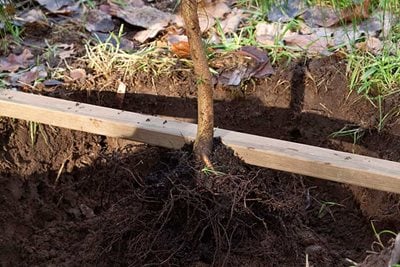
- Position your tree Place it in the hole, so the point where the roots meet the trunk is level with the soil surface. Check the level using a or piece of wood, and adjust if necessary. Step back and assess the tree – is it showing off its best side? If not, turn it until you’re happy with the positioning.
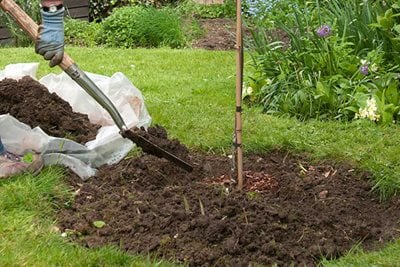
- Refill the hole Refill around the rootball, firming down the soil with your heel to ensure there are no air pockets. Check that the stem is still upright afterwards.

- Add a tree guard or spiral Fit one of these around the base of the trunk if wildlife such as rabbits visit your garden and may want to nibble the .
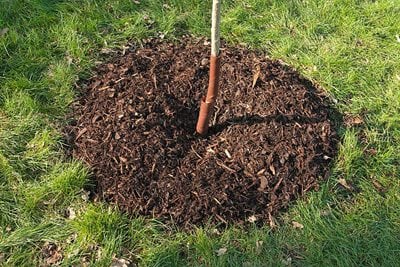
- Water well and Water the tree to thoroughly soak its rootball. Then, spread a mulch of organic matter over the surface of the soil, in a layer 5–8cm (2–3in) thick. This will help to hold moisture in the soil and deter weeds. Leave a 10cm (4in) mulch-free gap around the base of the trunk. See our guide to mulching.
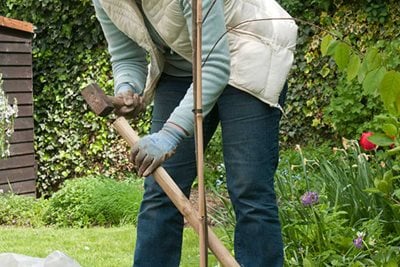
- Insert a sturdy stake Insert at a 45 degree angle, using a mallet to make sure it’s deeply anchored. Then attach the trunk to the stake with a flexible tree tie. This will hold the base of the trunk and rootball steady, allowing the roots to get well established, while letting the upper part of the trunk flex and strengthen. See our guide to staking trees.
Watch our RHS Masterclass on trees – how and when to plant:
Aftercare
- Water your new tree regularly for at least a year or two, especially during dry spells.
- Check the stake and tree tieannually, loosening the tie gradually as the trunk expands. Keep the stake in place for two to three years, until the tree is firmly rooted in.
- Top up the mulch at least once a year, to help hold moisture in the soil.



